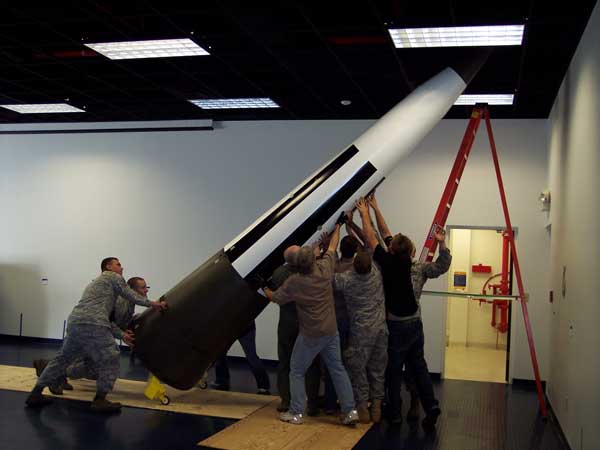
Photo Gallery
Overview
Display location:
History Center
The Pershing I (MGM-31A) nose cone was built by Martin Company.
The Pershing I was the first solid fuel Medium Range Ballistic Missile to be deployed by the U.S. Army. The Pershing was named after General “Black Jack” Pershing, General of the Armies. The replacement for the Redstone MRBM, it was the Army’s big stick until the deployment of the Pershing II in 1958.
With the Sergeant (SSM) missile program well underway, in mid-1956 the Army began a study to determine the feasibility of a solid fueled MRBM. A few months later, however, on 26 November 1956, Secretary of Defense Wilson restricted the range of Army missiles to 200 miles.
Regardless of this change in policy, research into a 400 mile range missile continued, and by late 1957 it was determined that such a missile was possible. That same year the range restriction was rescinded, allowing the Army to begin full-scale development in January of 1958. Two months later the Martin Aircraft company was issued the development contract for the Pershing missile.
Pershing Development
Development of the Pershing was very short by most standards. After just two years of research, in January 1960 flight testing of the Pershing began. In these early test flights only the first stage was live, the second stage being a dummy. Eight months later the first two-stage flight was completed.
The nose cone came from an entire Pershing I missile that was once on display in the museum rocket garden.
Moving the restored nose cone into the History Center required a lot of planning, time and muscle. In its final position, the nose cone passes through the drop ceiling grid and reaches to within a few inches of the roof.

